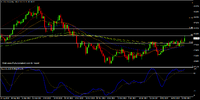Dona Ferentes
Pengurus pengatur
- Joined
- 11 January 2016
- Posts
- 16,243
- Reactions
- 22,175
Sunday night, Saudi Arabia admitted defeat in its attempt to maintain high world oil prices. They acknowledged being bested by the realities of the oil markets and consequently cut prices to their lowest point in over two years. OPEC+ (mainly Saudi Arabia and Russia) did not discuss further production cuts, only providing the usual details for next month's loadings.
OPEC+ had already claimed to reduce production by 2.2 million barrels per day in an effort to balance the market, with little lasting impact. This led to Angola leaving OPEC, and other African producers refused to discuss baseline quotas and caps.
Following December's inconclusive attempts by OPEC+ to stabilize oil prices after the brief boost from the October 7 Hamas attack on Israel, markets were hoping for more discussions on production cuts to support prices. Attacks on shipping in the Red Sea by Houthi militants from Yemen (supported by Iran) briefly raised prices but had no lasting impact.
Major oil traders are still sending large crude cargoes through the Red Sea and Suez Canal, with only Western-owned container and other vessels being targeted.
On Sunday, Saudi Arabia cut the February official selling price (OSP) of its flagship Arab Light crude to Asia to the lowest level in 27 months, reducing it by $US2 a barrel. This move indicates Saudi Arabia's intention to maintain market share and compete against cheaper crudes from Iran and Russia.
The United States is also contributing to lower oil prices, producing approximately 13.2 million barrels of crude per day in the last week of 2023, while its inventories of gasoline and distillate both increased by more than 10 million barrels. US crude exports also rose by more than 1 million barrels per day to a record 5.2 million barrels per day during the same period.
On Monday and Tuesday, the market's response to this news was a sell-off, with US West Texas-style crude and Brent losing more than 3% before stabilizing during Tuesday's Asian session. These falls more than reversed the 2% gain in the first trading week of 2024.
OPEC+ had already claimed to reduce production by 2.2 million barrels per day in an effort to balance the market, with little lasting impact. This led to Angola leaving OPEC, and other African producers refused to discuss baseline quotas and caps.
Following December's inconclusive attempts by OPEC+ to stabilize oil prices after the brief boost from the October 7 Hamas attack on Israel, markets were hoping for more discussions on production cuts to support prices. Attacks on shipping in the Red Sea by Houthi militants from Yemen (supported by Iran) briefly raised prices but had no lasting impact.
Major oil traders are still sending large crude cargoes through the Red Sea and Suez Canal, with only Western-owned container and other vessels being targeted.
On Sunday, Saudi Arabia cut the February official selling price (OSP) of its flagship Arab Light crude to Asia to the lowest level in 27 months, reducing it by $US2 a barrel. This move indicates Saudi Arabia's intention to maintain market share and compete against cheaper crudes from Iran and Russia.
The United States is also contributing to lower oil prices, producing approximately 13.2 million barrels of crude per day in the last week of 2023, while its inventories of gasoline and distillate both increased by more than 10 million barrels. US crude exports also rose by more than 1 million barrels per day to a record 5.2 million barrels per day during the same period.
On Monday and Tuesday, the market's response to this news was a sell-off, with US West Texas-style crude and Brent losing more than 3% before stabilizing during Tuesday's Asian session. These falls more than reversed the 2% gain in the first trading week of 2024.

